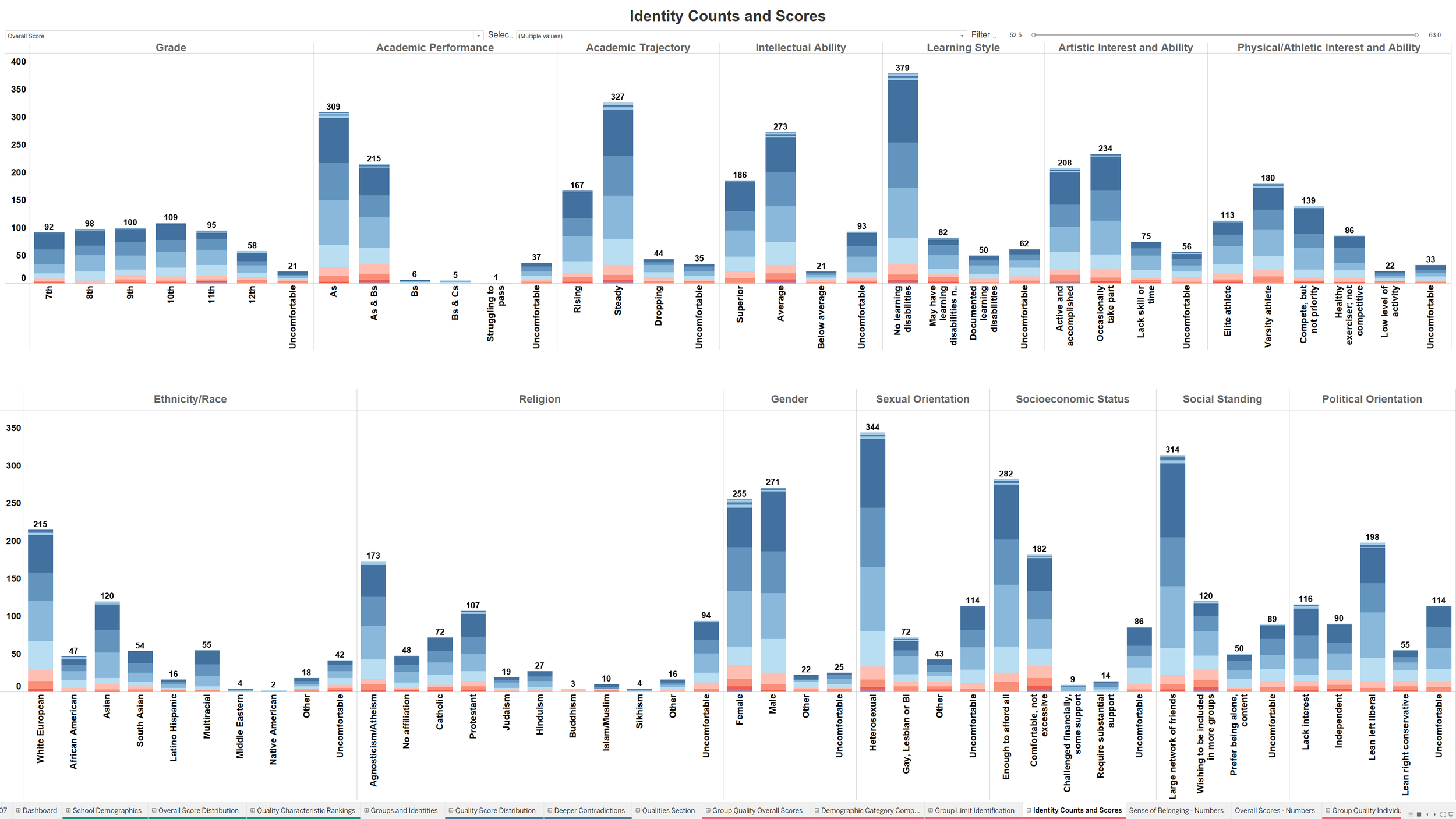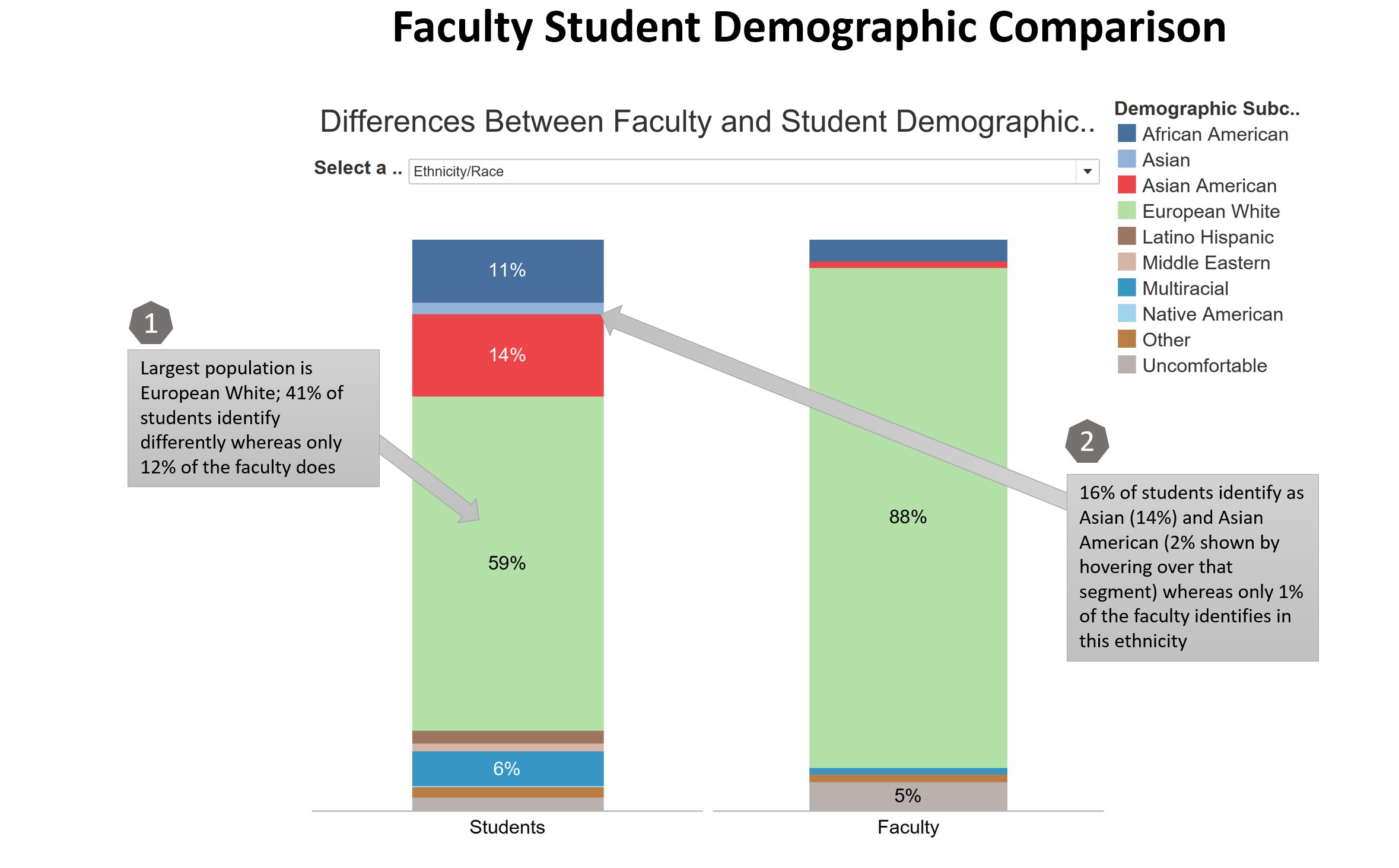Inclusivity Index Themes
Questions and Objectives
What is the path of a student’s identity development from matriculation to graduation?
Support maturation process and identity development.
How are different factors: maturation, externalities, interventions, and interests influencing changes?
Monitor externalities by tracking changes and comparing them to other schools.
Objectively track the influence of a school’s interventions.
The Inclusivity Index survey offers schools the identity profile of their student body over 14 demographic categories This creates a foundation for understanding the dynamics of identity as:
· Classes evolve from matriculation to graduation
·external forces impact all schools
·proactive interventions influence the community
Separately, the survey gathers much of the same data for the faculty, facilitating comparisons to the student profile.
The Inclusivity Index survey posits that four forces influence identity dynamics for students:
1. maturation
2. interventions
3. interests
4. externalities
Studying individual demographic categories, either in comparisons to the Inclusivity Index’s “All School Results,” or successive annual surveys at the school, reveal how these dynamics are at work. Some identities follow a predictable cycle, others react to changes in the environment or actions by the schools, and others are relatively static.
The analytical tools also combine identity dynamics with other parameters such as an identity’s propensity to exhibit negative scores. This gives insight into students in the more challenged identities exploring alternative identities. Additionally, identity dynamics is also used to study focused topics such as inhibited dialogue through trends of electing the “Prefer not to answer,” alternative in the demographic section of the survey. These anonymous survey variations offer insight into student inhibitions.







